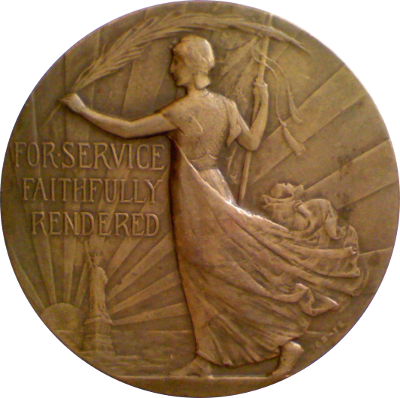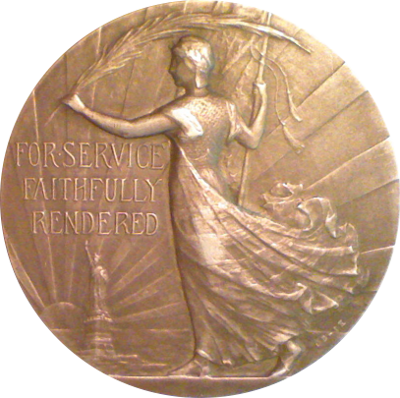Chester A. Beach was born in 1881 in San Francisco, California. He remained there until his early 20's, studying at first the California School of Mechanical Arts and later the Mark Hopkins Institute of Art. While continuing his study of art, he supported himself by designing jewelry. In 1903, he lived briefly in New York before continuing on to Paris, France in 1904.
In Paris, he studied at the École dex Beaux-Arts and the Académie Julian. At the Académie Julian, he studied under renowned French sculptor Raoul Verlet. Upon his return to the United States in 1907, Beach purchased a studio in Manhattan. He maintained this studio for close to fifty years, even when he wasn't in the country.
While in Paris, he had met Eleanor Hollis Murdock, the woman who would become his wife. They were married in 1910 and lived in Rome from 1912 to 1914, when they returned once again to New York. Together, they had three daughters – Beata (a painter), Eleanor (a well known conservationist), and Natalie.
His reputation as an artist and sculptor in America steadily grew after his return from Paris in 1907. He was quite good at bust and profile work, but many of his other works were characterized by an incorporation of mythological and allegorical figures. He was an elected member of the National Sculpture Society (of which he was the president in 1926-7), the Salmagundi Club, and the American Numismatic Society. His first big commission came in 1915, when he submitted three sculptures to the Panama-Pacific International Exposition and won a Silver Medal. Over the course of his six-decade career, he designed and engraved a great deal of special edition half-dollars and created busts of famous figures, the most well-known of which are still on view in The Hall of Fame for Great Americans.
In 1917, Beach gave a local farmer two of his sculptures, and received in return 10 acres of land in Brewster, New York. There, he first built a studio for himself. In 1918, he used stones from the property's walls and built his family a home, aptly named "Old Walls." In 1947 he oversaw the building of "The Camp," an additional cottage on the property. Beach lived in Old Walls until his death in 1956. Until 2009, his studio on the property housed a large collection of his work.
Sourced mainly from Wikipedia and articles listed in Resources section.





















